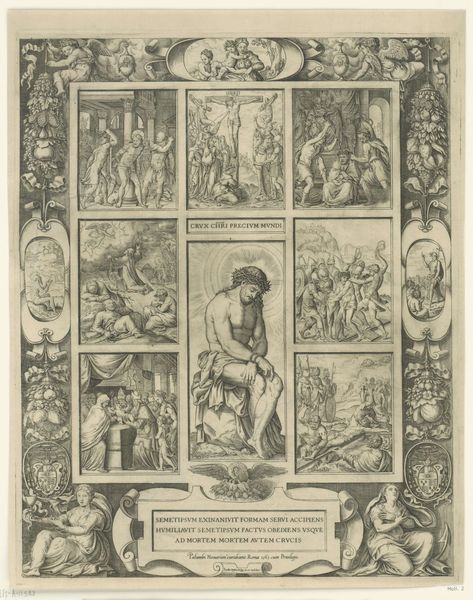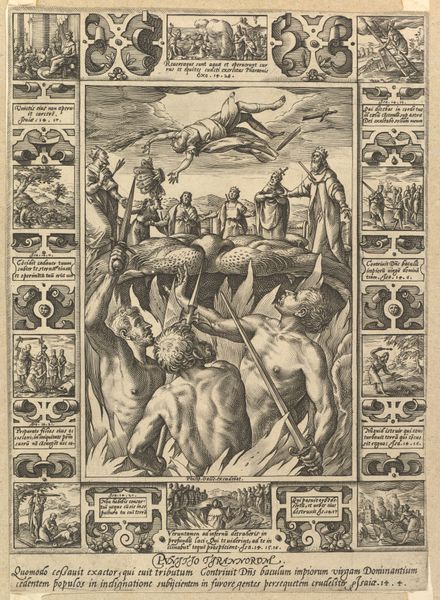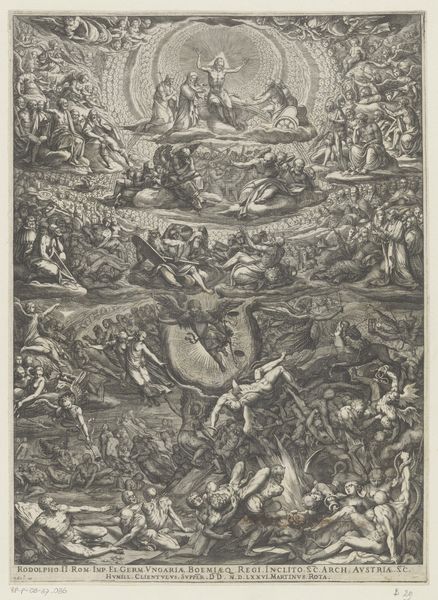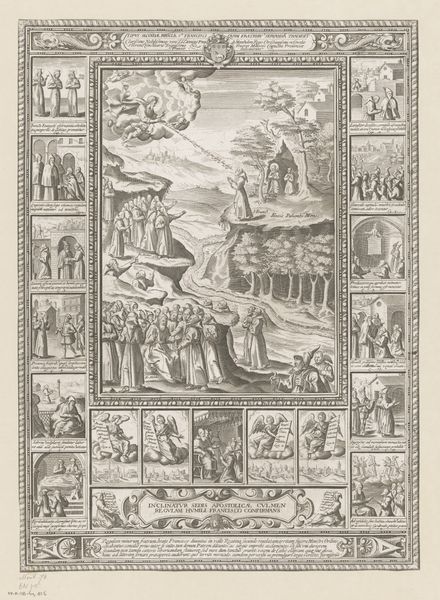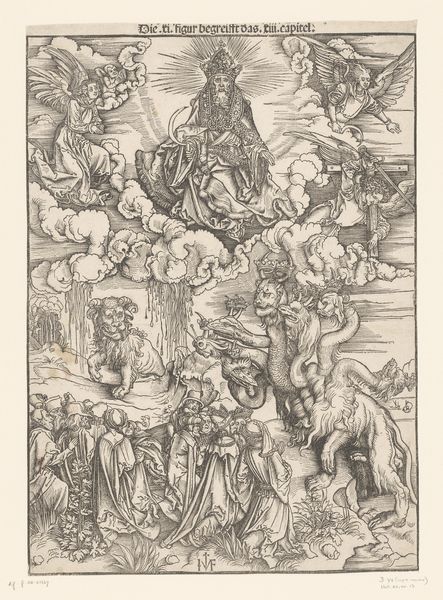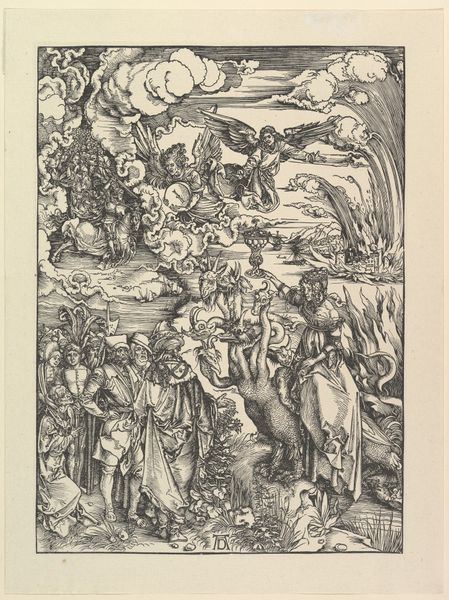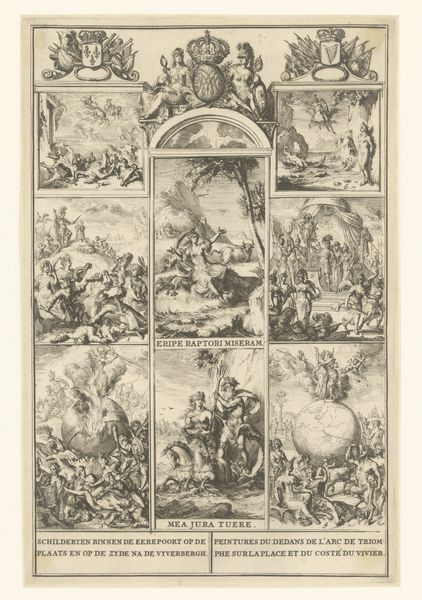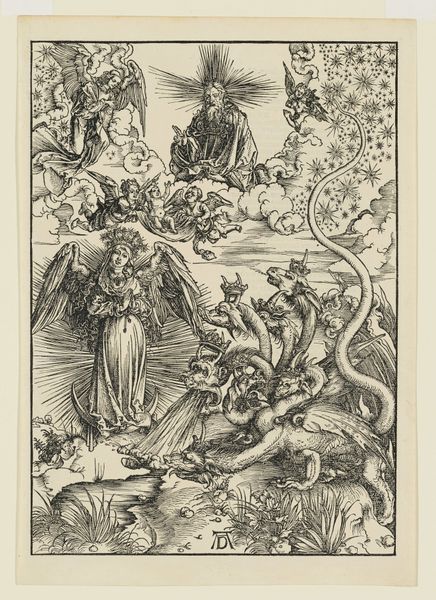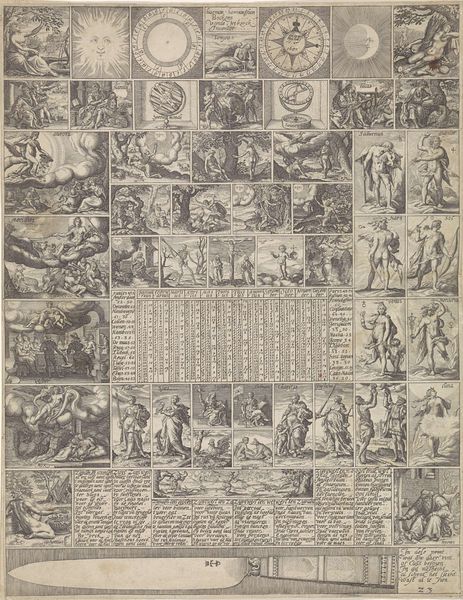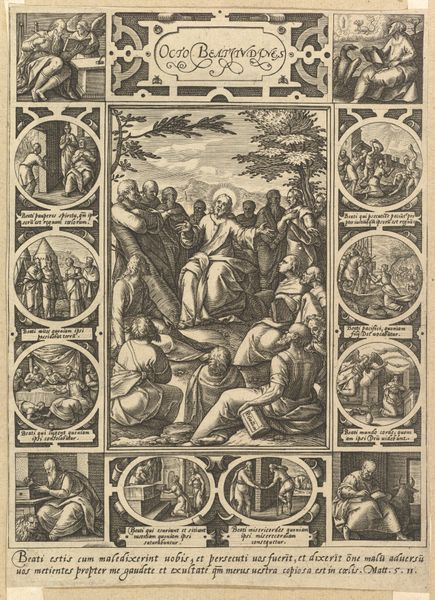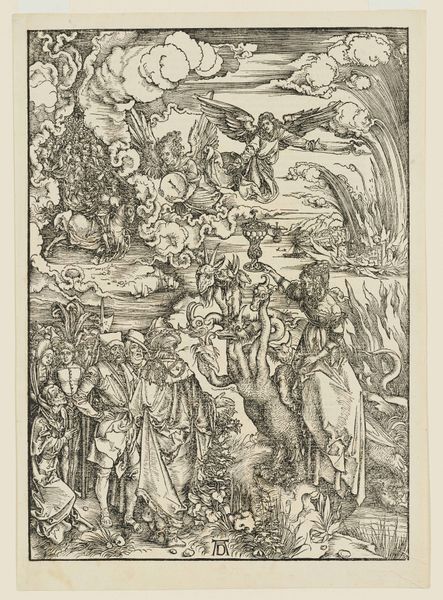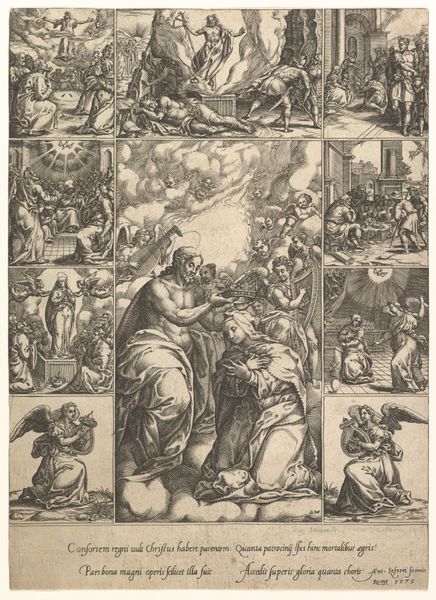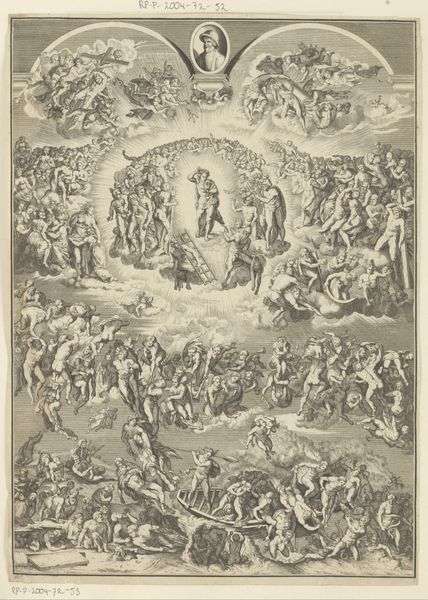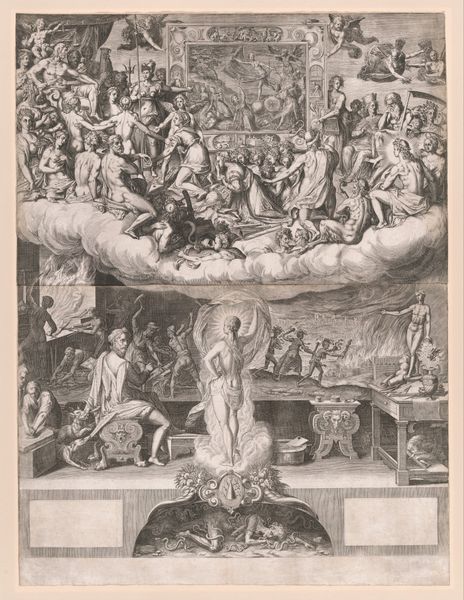
Neptune calming the tempest which Aeolus raised against Aeneas' fleet from Book I of the Aeneid 1510 - 1521
0:00
0:00
drawing, print, engraving
#
drawing
# print
#
ancient-mediterranean
#
history-painting
#
academic-art
#
italian-renaissance
#
engraving
Dimensions: Sheet: 16 5/8 x 12 3/4 in. (42.3 x 32.4 cm)
Copyright: Public Domain
Curator: Standing before us is Marcantonio Raimondi’s engraving, “Neptune calming the tempest which Aeolus raised against Aeneas' fleet from Book I of the Aeneid,” created between 1510 and 1521. Editor: It's…striking. A swirling vortex of bodies, both human and mythological, trapped within rigidly defined panels. I find the juxtaposition unsettling, the chaos trying to break free of the structure. Curator: Raimondi was instrumental in popularizing the art of engraving in Italy. Here, he’s visualizing a pivotal moment from Virgil’s epic poem, *The Aeneid,* showcasing not just artistic skill but also literary engagement, a common interest of this era. We can see how political authority liked to attach itself to mythical origins. Editor: Definitely. But looking closely, I see more than just illustration. There's a tension embedded within the very structure. Neptune, in the center, seems to quell the storm, yet he’s surrounded by vignettes illustrating the wider narrative of displacement and divine intervention. How might we see this narrative in our contemporary sociopolitical discourse regarding migrants and border controls, which still, often dehumanizingly, controls individuals' bodies in crisis? Curator: That’s a powerful lens to view it through. This image participates in a long tradition of depicting power structures. The gods are in control of humans—we're not in control of our journeys. We see here also a very specific set of class concerns that are inherent in this classical subject, as it became integrated into aristocratic education. Editor: The Aeneid, in this form, also becomes an exercise in claiming cultural legitimacy, framing displacement not as random chaos, but as ordained by higher powers, as this artistic form helped create national identity within Italy itself. The linear precision of the engraving gives the image an aura of authority, legitimizing these hierarchies. It's as if the crisp lines try to impose order onto a story fundamentally about uprootedness and volatile seas. Curator: So, while ostensibly celebrating classical literature and power, Raimondi’s engraving, viewed through a modern lens, also opens up uncomfortable dialogues. Editor: Precisely. This isn't simply a historical depiction, it’s also a stark visual commentary on our present, where control, especially the control of narratives, shapes destinies.
Comments
No comments
Be the first to comment and join the conversation on the ultimate creative platform.
